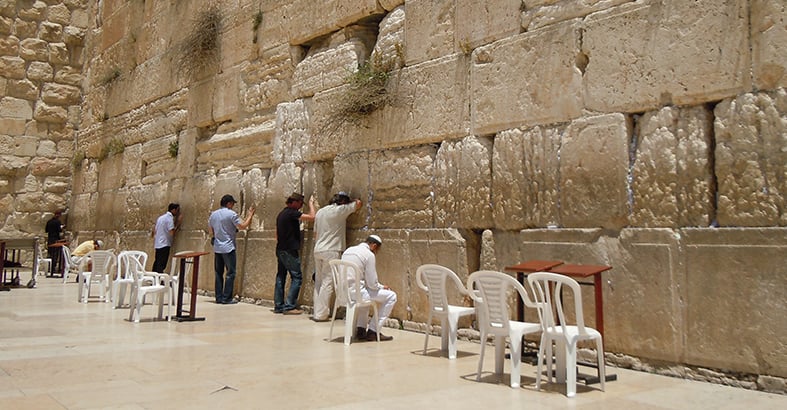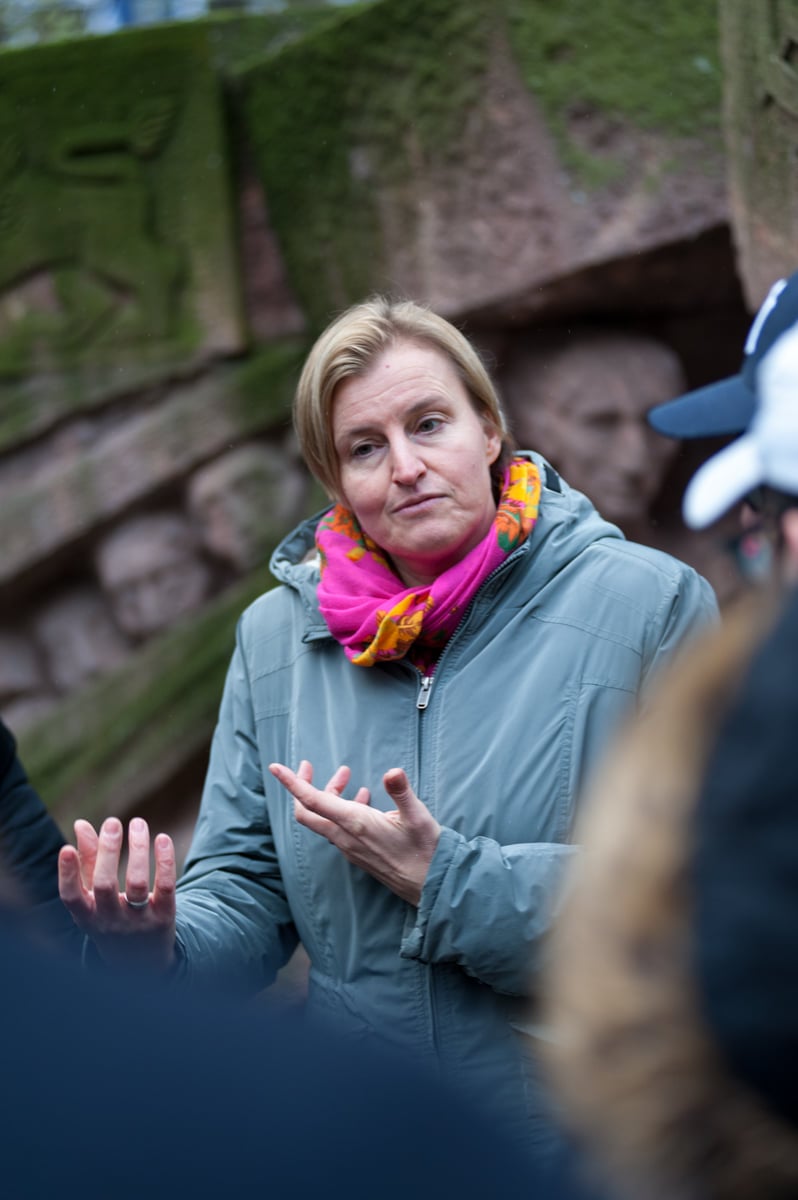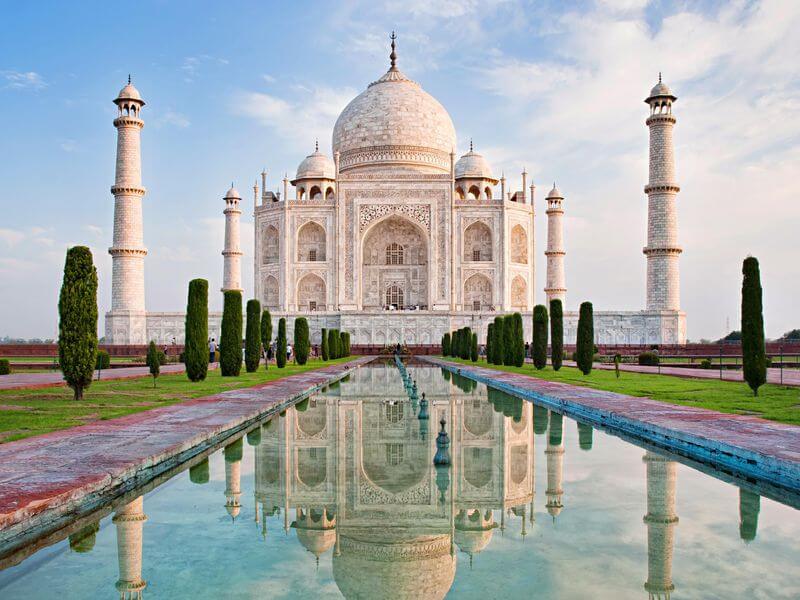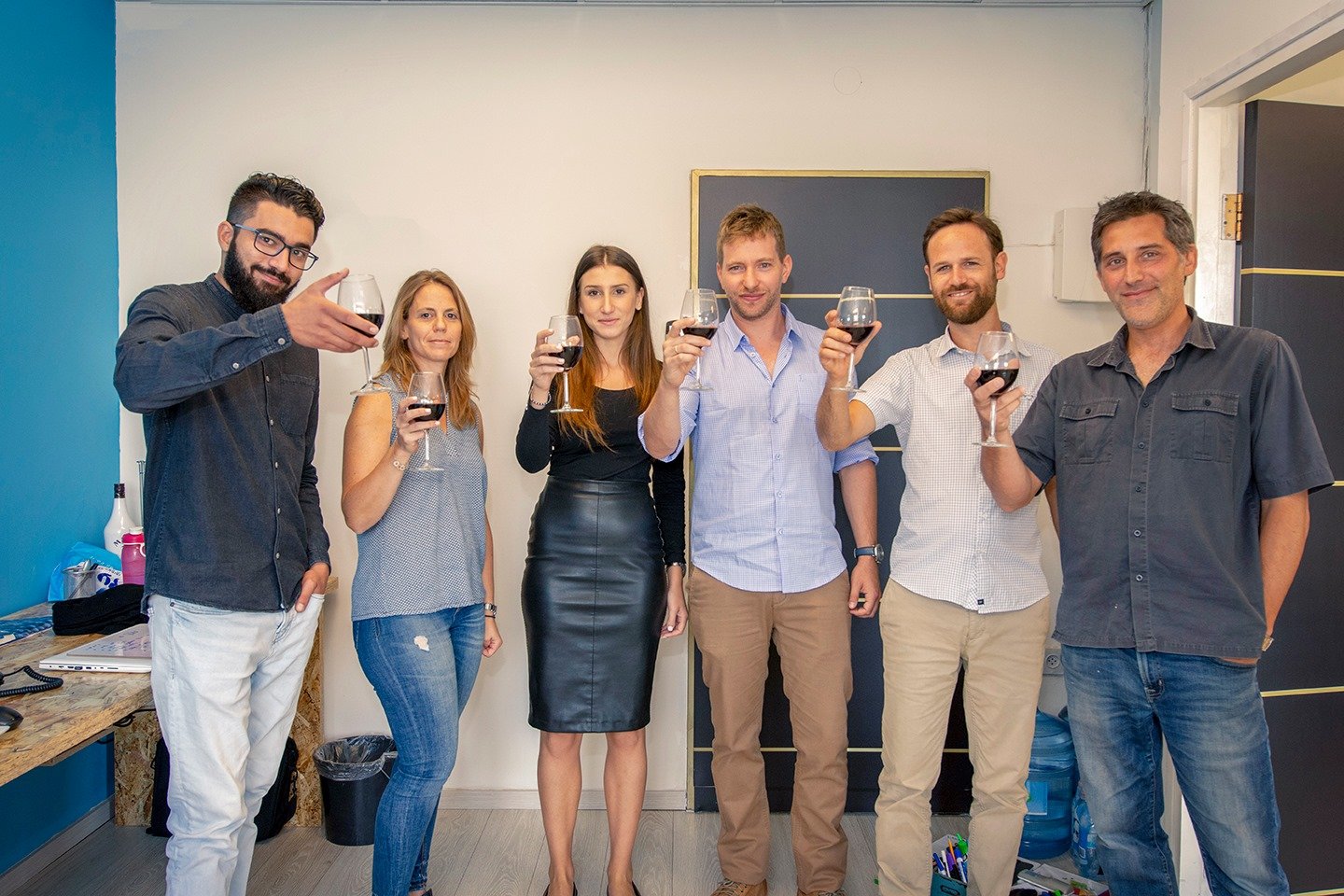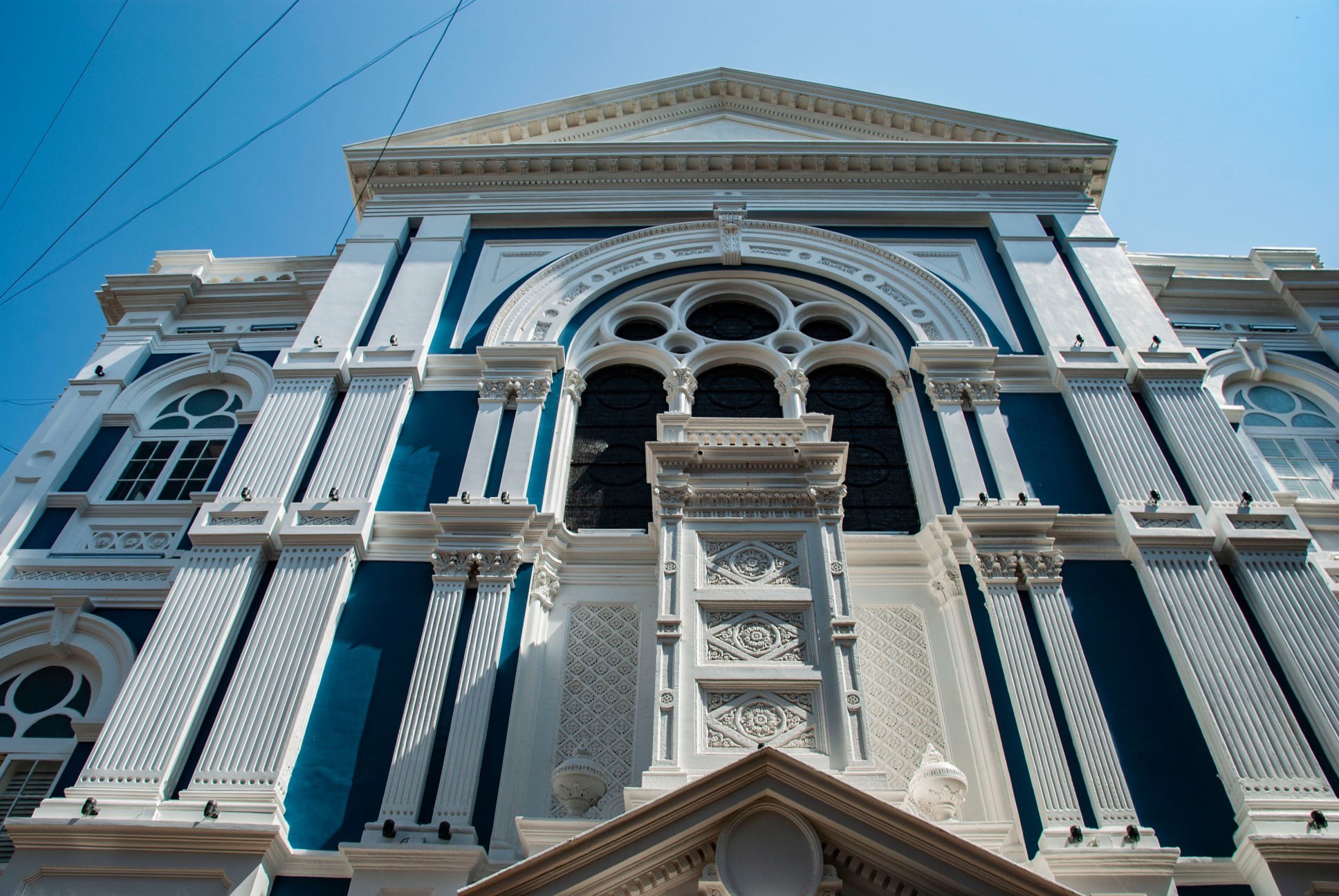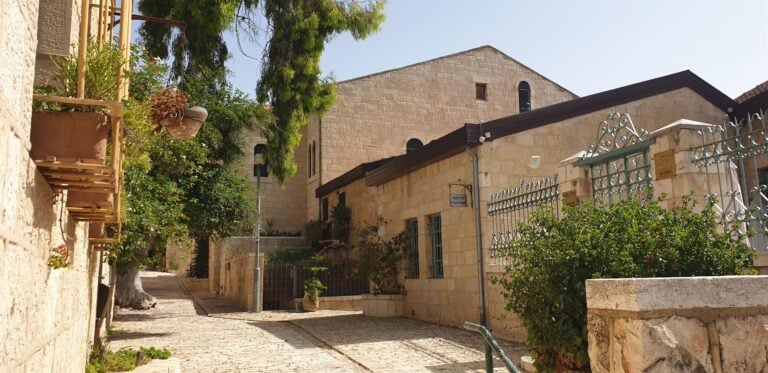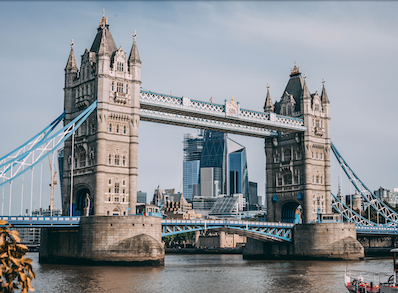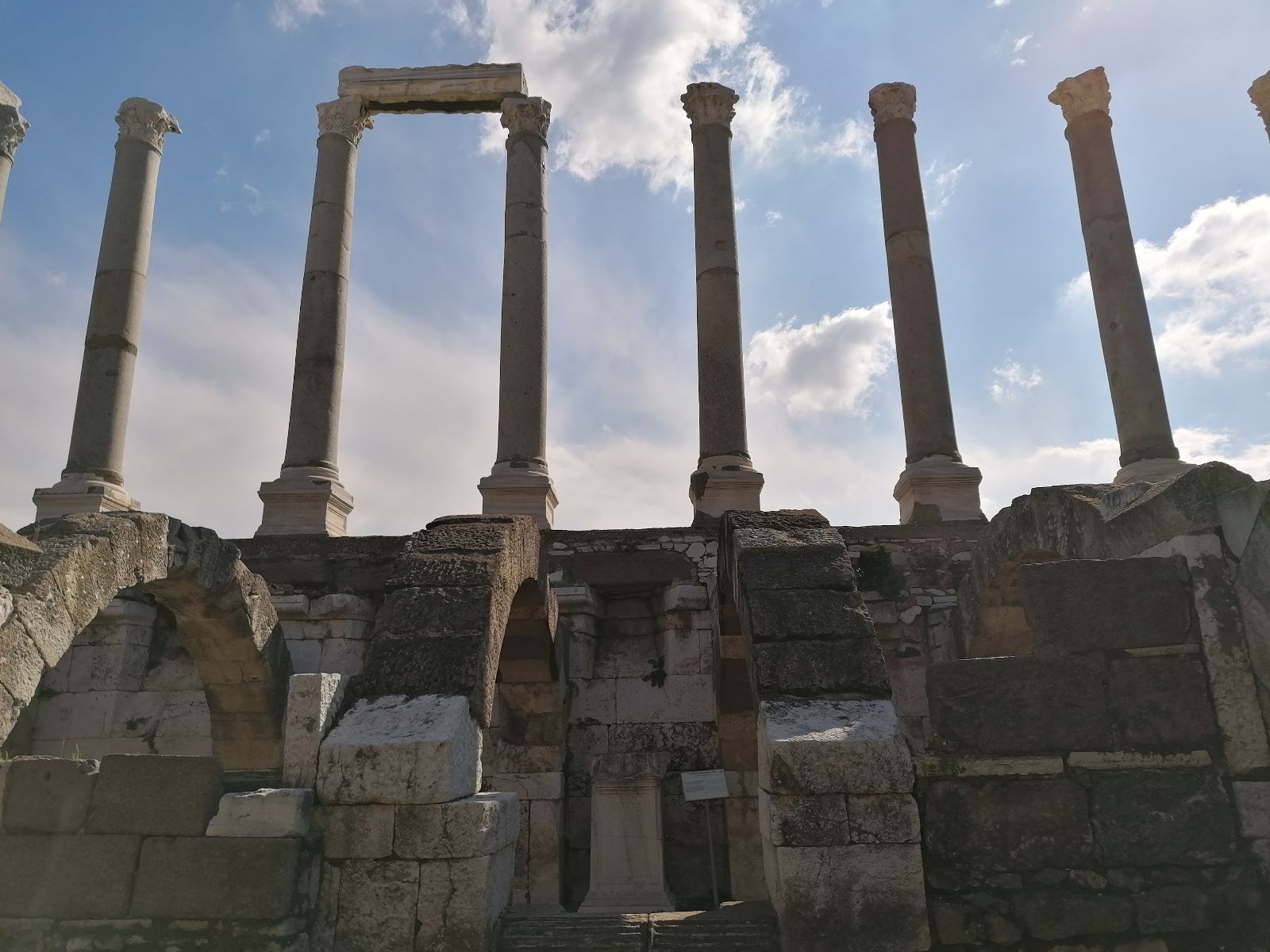Explore the complexities, beauty, and challenges of ancient and modern life on this gay Israel cultural tour. We will uncover the archaeological beginnings of three great religions, introduce you to a thriving LGBT community, and expose you to the social labyrinths of modern Israel. Consider our optional extension afterward to visit Petra and other landmarks of Jordan.
Archives: Directory listings
Directory listings
Germany Close Up
Germany Close Up – North American Jews Meet Modern Germany is a youth encounter program for Jewish, North American students and young professionals aged between 18 and 39. The program is funded by a grant from the German Government’s Transatlantic Program, which draws on funds from the European Recovery Program (ERP) of the German Federal Ministry for Economic Affairs and Climate Action. As such, the program aims to encourage German-Jewish-North American dialogue as well as to strengthen the involvement of the North American Jewish community in transatlantic relations.
Germany Close Up brings 250 participants on ten to twelve programs to Germany each year. Participants are Jewish, North-American students and young professionals aged between 18 and 39. Our programs aim to give participants the opportunity to experience contemporary Germany firsthand. The majority of programs are organized together with Jewish partner organizations based in North America and which cover a diverse range of religious and political backgrounds.
Jewish Heritage and the Golden Triangle
Discover the wonders of India’s Golden Triangle region along with its rich Jewish history. You will explore Delhi and Mumbai, where you will visit synagogues dating back to the 19th century. Experience world-renowned attractions including the Taj Mahal, ancient fortresses and palaces, and India’s vibrant array of local bazaars. You will be immersed in an authentic cultural experience in the exotic locales of Kerala and Rajasthan, meeting locals, and exploring the terrain on a camelback safari. A live traditional Indian dance performance and Bollywood movie screening will give you a greater glimpse into the fascinating local cultural heritage. Shabbat will be spent in Pushkar – a colorful, bustling village filled to the brim with Israeli backpackers. Your trip to India is sure to be the adventure of a lifetime.
Shin Tours
Are you looking for a very special tour in Israel? A tour that’s a little different … off the beaten track, one that lets you dig into culture and history as you meet the people who actually live in this fascinating Land? And if that isn’t enough to ask, perhaps you’d like a tour that’s dependable but flexible, with guides who know the ropes, yet are never, ever boring. If this describes you as a traveler, then Shin tours is exactly what you’re looking for.
Jewish India Tour
Jewish India Tours is an inbound travel boutique company with decades of experience in arranging Jewish tours of India. We provide friendly, professional and individualized service with an insider’s perspective. Experience India with all five senses with us. Learn about the intriguing history, culture and customs of the Jewish communities of Mumbai, Cochin, and Delhi. Eat, pray, and mingle with members of the community. You will visit world-renowned architectural sites, explore famous markets that entice your senses, and experience local customs along narrow urban streets. Explore Indian history and culture and delve into 2,000 years of Jewish life in the world’s most populous democracy.
outside jerusalem old city walls
A walking route between the various Jerusalem neighborhoods outside the walls of the Old City is a must-see experience that every traveler in Jerusalem must experience. On such a trip you will find plenty of historic houses, cultural institutions, pleasant cafes and a special atmosphere. For dessert today you will arrive at the restaurant and you can stay in one of the boutique hotels scattered around the city.
danny zacs
shalom to my friends !!!!
i am danny and it will be my pleasure to host and guide you during your stay in israel.
weather you are looking for jewish oriented tour, desert tour, bar mitzvah tour, cultural or luxury tour while in our wonderful country dont hesitate to contact me. as a proffesional licensed tour guide, in english and spanish, it is my passion to guide you in israel showing you those hidden gems and familiarizing you with our lovely people.
London 2-day itinerary highlighting Jewish sites and restaurants
Behold the grand tour of Jewish London in a 2-day sample itinerary, neatly bundled up for you both on Tripographer and in the blog below. On the free Tripographer app, you can tailor the itinerary to your choice. Fancy swapping an extra museum visit for one less bagel stop? It is easy to adjust on the app.
Tripographer is more than a travel planner – it’s a platform for sharing your travel stories. Whether you’re regaling the community of chatting with a sales vendor in Camden Market or your discovery of the fluffiest challah in Golders Green, your tales add to the richness of our collective travel knowledge. After all, isn’t the best advice often born from first-hand experience?
Below find a sample 2-day itinerary to visit the main Jewish sites in London, while stopping at some delicious places to eat along the way:
Where to stay:
A great mid-range option is the Tower Hotel. It is located next to the Tower Bridge, offering great views and comfortable rooms. It’s also within walking distance of the Bevis Marks Synagogue. A more luxurious, and iconic stay is the Savoy. It’s centrally located, close to many attractions, and offers exceptional service and comfort.
DAY 1: Exploring Jewish History and Culture
Start your day at the Jewish Museum in Camden. It houses a variety of exhibits on Jewish history, culture, and traditions in Britain. How to get there: If you stay in central London, take the Northern Line tube to Camden Town station. It’s just a short walk from there.
Enjoy Lunch at Reubens, London’s famous kosher restaurant known for their salt beef sandwiches. How to get there: From the Jewish Museum, it’s about a 30-minute journey by tube. Take the Northern Line from Camden Town to Euston, then switch to the Bakerloo Line to Baker Street. Or dine at The Good Egg (non-kosher, Jewish-owned) – They serve a blend of Middle Eastern and Jewish cuisine. Try their famous Shakshuka. (93 Stoke Newington Church St, Stoke Newington, London). How to get there: From the Jewish Museum, take the Overground from Camden Road to Dalston Kingsland, then switch to bus 67 or 76 to Stoke Newington Church Street.
In the afternoon, visit the Bevis Marks Synagogue, the oldest synagogue in the United Kingdom. How to get there: From either restaurant, take the tube to Liverpool Street station. The synagogue is a short walk from there.
In the evening explore Brick Lane, where the Jewish community was concentrated in the 19th and early 20th centuries. It’s also known for its vibrant street art and food scene. How to get there: It’s a short walk from Bevis Marks Synagogue.
For dinner dinner enjoy Monty’s Deli (non-kosher, Jewish-owned) – Known for their homemade pastrami and salt beef. How to get there: From Brick Lane, take bus 8 from Shoreditch High Street Station to Hoxton Street. Or enjoy White Fish – A popular kosher fish restaurant. How to get there: From Brick Lane, take the tube from Aldgate East to Hendon Central.
DAY 2: Discovering the Modern Jewish Community
Start the day by visiting Golders Green, a neighborhood with a large Jewish population. Explore the local shops and enjoy the community atmosphere. How to get there: From central London, take the Northern Line tube to Golders Green station.
Enjoy lunch at White House Express – A popular kosher pizza and falafel spot. Or at The Happening Bagel Bakery (non-kosher, Jewish-owned) – Known for their authentic, hand-rolled bagels. How to get there: From Golders Green, take the Northern Line to Finsbury Park.
In the afternoon visit the Holocaust Memorial Garden and Anne Frank Tree in Russell Square. The tree is a sapling from the original one that Anne Frank could see from her hiding place in Amsterdam. How to get there: From either restaurant, take the tube to Russell Square station.
Spend your evening at the JW3, the Jewish Community Centre London. They often host a range of cultural events. How to get there: From Russell Square, take the Piccadilly Line to Swiss Cottage Station. JW3 is a short walk from the station.
Enjoy dinner at Zest at JW3 – A contemporary Kosher restaurant located in the same building as JW3, serving a variety of Middle Eastern inspired dishes.Or try the Palomar (non-kosher, Jewish-owned) – Renowned for its Eastern Mediterranean cuisine. How to get there: From JW3, take the Jubilee Line from Swiss Cottage to Green Park, then switch to the Piccadilly Line to Piccadilly Circus. The restaurant is a short walk from there.
Remember, you can always tweak the itinerary to better suit your preferences and travel style on the Tripographer app. You can also check out Tripographer‘s other London trips, bookable experiences, and featured attractions to help you further plan your trip.
Turkey Jewish Heritage Tour (Izmir and Sardes)
This Jewish Heritage Tour combines Sardes’ ancient site and Izmir’s
capital. You will be/can be met
at the Izmir airport or even at your Hotel in Izmir. Then drive to the Karatas
area in Izmir.
Beth Israel Synagogue
Visit Beth Israel Synagogue, The construction of the
Bet Israel Synagogue started on 15 March 1905 upon the decree of Sultan
Abdulhamid II, and it was opened to worship in 1907. Bet Israel is the largest,
most magnificent, and ceremonial synagogue in Izmir. However, the temple
differs from the traditional Izmir style with its building style and seating
arrangement. It was not built with a central plan but has been a double
practice of Teva from the very beginning. Due to the location of the building
plot, the Ehal (the closet where the Torah rolls are stored) is placed on the
south wall instead of the east wall.
Dario Moreno Street:
It
is located on Dario Moreno Street. There are old Greek houses lined up left and
right in this beautiful street, named after the famous artist Dario Moreno from
Izmir and was formerly called Elevator Street. There is also the house on the
street where Dario Moreno lived for a while. These houses, each of which has
been transformed into small and cute cafes and art workshops today, add a
different spirit to the street.
The Historical Elevator (Asansor)
The Historical Elevator is the best structure
to catch the unique view of Izmir Bay with its promenade at the top. The
elevator was built in 1907 by Jewish businessman Nesim Levi to overcome the
topographical barrier between hill neighborhoods above sea level. Then drive
to Konak Square and visit the clock tower;
Konak Square – The Clock Tower-Kemeralti Bazaar
Izmir
Clock Tower, the symbol of Izmir, is the Ottoman Sultan II. It was built in
1901 as part of the 25th-anniversary celebrations of Abdulhamid’s accession to
the throne. Kemeralti Bazaar is called a well-established
commercial area. This commercial square, which was started from the Hisar
Mosque built in Izmir in 1592, has grown more and more. Since the 19th century,
inns and covered bazaars have been located in the Kemeralti Bazaar, which has
been the liveliest trade point in İzmir. However, the shops here were referred
to as small businesses that local people were interested in. Options such as
blacksmith, coal maker, nail maker, spice and straw bazaar were located in
Kemeralti Bazaar in the past. Commercial shops in different areas were also
found at various points.
Havra Street (Synagogues Streets):
Havra Street, named after the many
synagogues in its vicinity, was a lively shopping center where Kosher (Halal)
food was produced and sold. According to their beliefs, the Jews of Izmir used
to obtain a significant part of their food needs, such as meat, fish, chicken,
yogurt, cheese, and eggs from Havra Street. As with other foods, wine
production was produced in and around this street in accordance with Kosher
rules. You will also have the opportunity to taste the dishes in the Sephardic
cosine. After lunch, drive to Sardes.
Sardes Ancient Ruin:
The ruins of Sardis
are incredible, surrounded by a stunning mountain backdrop. A must for archeology
buffs, photographers, people interested in Judaic history (magnificent ancient
synagogue), and bible study groups (one of the seven churches of the
Revelation). Do some research before visiting. Today’s ruins are pretty
impressive, with the best-preserved ancient synagogue and gymnasium being the
highlights for many. A sign points south to the Temple of Artemis, just over
1km away. This is where money was first used. Today only a few columns of the
once-magnificent but never-completed building still stand.
Nevertheless, the
temple’s plan is visible and very impressive. Nearby is an early Christian
church dating from the 4th century AD. After the tour drive back to Izmir.
Overnight in Izmir.
A Tour of the Vatican Museum & Saint Peter’s Basilica with a Jewish American Tour Guide, Andrea Stoler, PhD.
A Tour of the Vatican Museum & Saint Peter’s Basilica with a Jewish American Tour Guide, Andrea Stoler, PhD.
American Jews understand the idea of religious identity differently from American Christians visiting the Vatican Museums and Saint Peter’s Basilica. Since World War II, there have been three significant changes in American Judaism; the Holocaust, the birth of the State of Israel and Jewish-Christian relations following the Second Vatican Council (Vatican II), from 1962 to 1965.
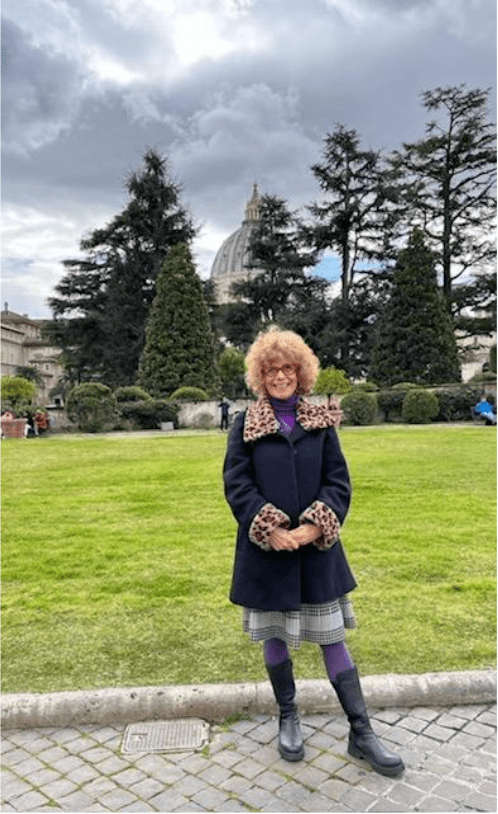
Until now, Jewish tours of the Vatican traditionally have focused on how the Sistine Chapel was designed to be a copy of the holy Jewish Temple in Jerusalem built by King Solomon, or how Michelangelo embedded the Torah and Kabbalah in his famous Sistine ceiling and Last Judgement (See Sistine Secrets, Rabbi Benjamin Blech, and Roy Doliner, 2008). Of course, a quick visit to the Jewish Lapidary (if it’s open) provides the viewing of some of the cast copies of stone funerary epigraphical inscriptions from the Jews of ancient Rome. This is your basic Jewish Vatican tour conducted by both Jewish guides from the community and non-Jewish guides in Rome.
Jewish education is a vital component in ensuring “Jewish survival.” Studies consistently show that the more Jewish education a child receives, the more likely she or he is to practice Judaism, support its goals and institutions, and raise a Jewish family. (Kaplan, 2005). Importantly, Judaism requires all Jews to study throughout their entire lives. This is the fundamental difference between Jewish and secular education. All forms of Jewish education are vitally important, whether from an educational institution, a synagogue or a guided tour in the Vatican Museums and Saint Peter’s Basilica, explains American scientist Andrea Stoler.
Originally from upstate New York, Stoler received her PhD in Molecular/Cell Biology from Northwestern University in Chicago. She is an accredited tour guide in the Vatican City making her the first and only Conservative Jewish American woman who gives full-day or half-day tours in the Vatican Museums, Sistine Chapel, Saint Peter’s Basilica, including its dome and papal crypts, and Saint Peter’s Square from a historically Jewish perspective.
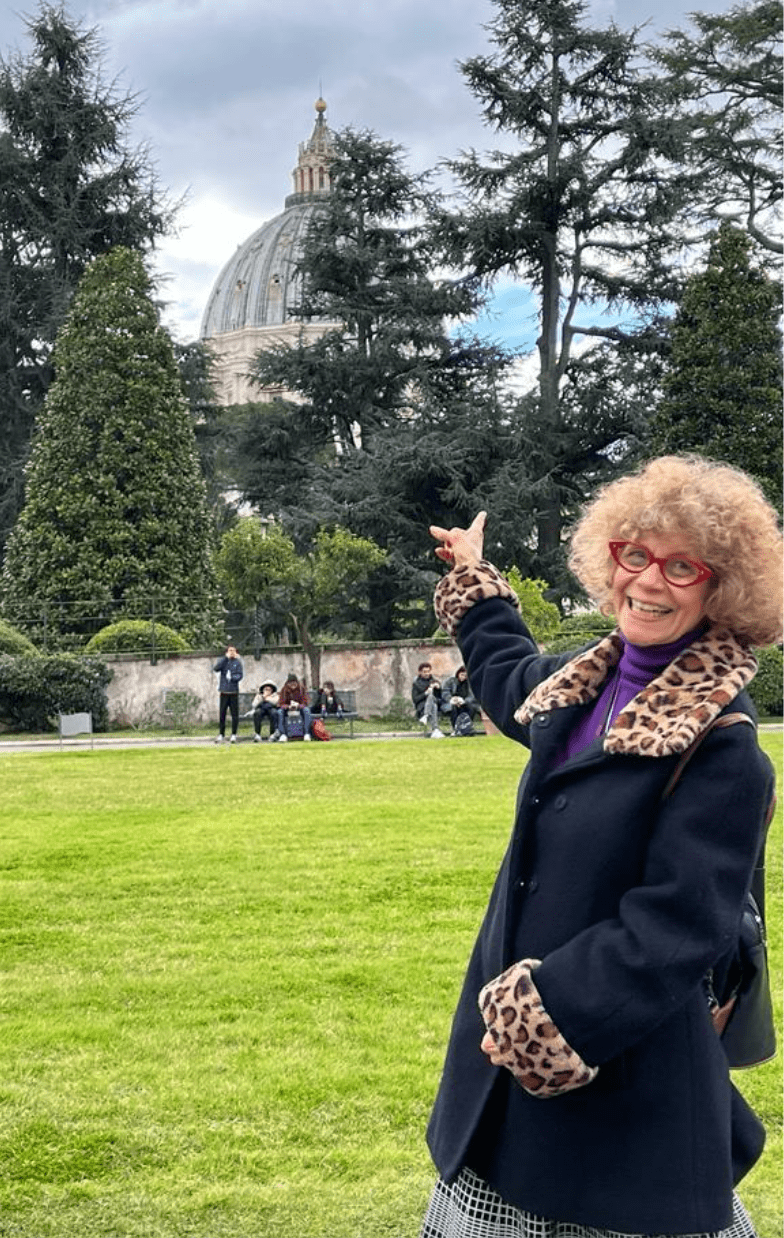
Stoler, a trained scientist with extensive knowledge in history, devotes her tours to important events in Jewish history relating to the Vatican and its popes. For example, once passing the security check in the Vatican Museums Stoler stops to show a modern statue by Giuliano Vangi (1999), Crossing the Threshold. She points out how this depicts Pope John Paul II pushing a young man into the world encouraging him to become involved. (In The Footsteps of Popes, Bruschini, 2000). She passionately mentions that, in 1986, Pope John Paul II became the first pontiff in history to visit a synagogue. He met with the Chief Rabbi Elio Toaff and famously referred to Jews as “elder brothers”. This meeting profoundly, and irrevocably, changed relations between the two faiths.
Once officially inside the Vatican Museums, the next stop is the long and deep spiral ramp, built in 1932 by the architect Giuseppe Momo (1875-1940), a design which greatly influenced the Guggenheim Museum in 1937. Here is where Stoler quickly explains how the papal mobility up to the Vatican hill and throughout Rome was provided by horses, mules, and donkeys. She further mentions how two spiral staircases are said to have been part of Solomon’s Temple, leading to a sacrificial altar. Here in the Vatican Museums are two spiral staircases. Then she takes visitors to the Carriage Museum to see the collection of carriages and cars used by popes and cardinals.
Stoler next stops to show a painting of a papal procession through the Roman forums explaining how the Jews of Rome were required to meet the newly elected pope and give him a Torah scroll as a gift. Through this presentation, Roman Jews acknowledged each new pope as their temporal ruler in Rome
The tradition of Jews gifting a newly elected pope with a Torah provides us with an understanding of the historical relations between the Vatican and its popes with the Roman Jewish community which continue until today. “This is why I like to stop at each of the Pope’s busts alongside their carriage and highlight their relations with the Jews during their reign,” explains Stoler.
Another significant stop that Stoler believes is vital in recognizing Jewish history on her tour is the first room in the Pinacoteca (Picture Gallery). The Art Gallery was inaugurated by Pope Pius XI on October 27, 1932. Stopping under his portrait bust, Stoler explains that relations between Pope Pius XI and the Jews during his reign from 1922 to 1939 are generally regarded as positive. She likes to share one of his quotes to Belgian pilgrims whom he received on September 8, 1938: “It is not possible for Christians to take part of antisemitism. Spiritually we are Semites.” (Encyclopedia Judaica, 2008).
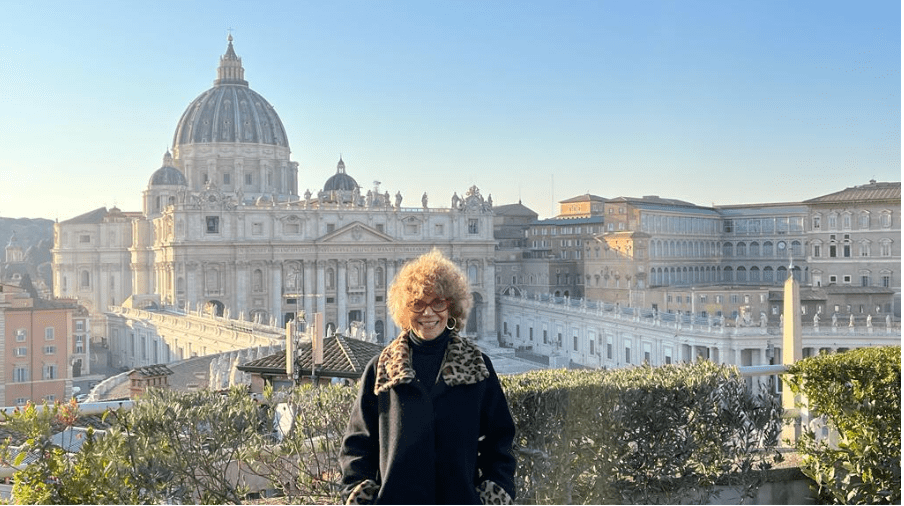
Interestingly, Pope Francis spoke similarly when he received a delegation in 2018 from the ancient community of Mountain Jews to discuss Holocaust anniversaries and the problems of antisemitism. The Pope noted that there are still antisemitic attitudes in our society today: “As I have often repeated, a Christian cannot be an anti-Semite; we share the same roots.”
Just across from the bust of Pope Pius XI is a large cast copy of Michelangelo’s Pieta. After a brief explanation of the story about Michelangelo’s Pieta, Stoler adds a comment from the Mishna and concludes by saying how the most famous Christian sculpture of all time is a Jewish mother with her Jewish son.
The Vatican Museums consist of 54 galleries housing about 70,000 art works from Roman sculpture to Medieval and Renaissance paintings, but only about 20,000 are on actual display. It is not possible to see everything; the heat and the crowds of tourists canquickly become overwhelming. Thus, it is important to hire a private tour guide or participate on a group guided tour, so you are introduced to the highlights of the Vatican Museums, Sistine Chapel, and Saint Peter’s Basilica in about three hours. For a tour focusing on the Jewish history of Rome and the Vatican, a Jewish tour guide is ideal and the most well-versed.
Every room is inaugurated by a pope, and there is a Jewish story with each one. Stoler narrates the history of the papacy and its relations to the Jews brilliantly. Moreover, 2023 is of significance because October 16, 2023 will be the 80th anniversary of the darkest Shabbat in history of the Jews of Rome. It was on that infamous day, eight decades ago, that Pope Pius XII remained SILENT as over 1000 Roman Jews were deported by the Nazis and taken to a military college (prison) just down the street from his papal palace.
A visit to Saint Peter’s Basilica and the papal crypt where Pope Pius XII is buried is part of Stoler’s in depth Jewish historical tour of the Vatican. Stoler is often asked about the actions of Pope Pius XII towards the Jews of Rome during the German occupation of the city. Even though this action was taken in sight of the Vatican, no papal intervention was taken to stop this action.
One must however bear in mind, that at the time of the deportation, several hundred Roman Jews were hidden in the Vatican, and in various religious institutions throughout Italy. The papacy could have sanctioned the opening of many places of refuge for the Roman Jews. There are historians who are quite critical of the actions of Pope Pius XII regarding the Roman Jewish deportation and the Holocaust in general. Yet, there are also those who defend the pontiff.
As this ongoing debate continues, scholars are learning more about what the Catholic Church did and didn’t do to save the Jews. Stoler’s tour examines both sides of the argument regarding Pius XII from an objective point of view. By doing so, Stoler will eventually be able to create a short but lucid and cogent synopsis of the arguments of each side that she shares with those on her tour. She will also share with participants on her tours the views of the Chief Rabbi of Rome. If she is asked her opinion on the issue, Stoler will give an informed and thoughtful opinion based on the proposed current study. Her opinion will be shared in a tactful manner that eschews any sort of partisan point of view.
Stoler’s passionate, creative, and innovative way of explaining Jewish history of the eternal city concludes in Saint Peter’s square by reciting the unforgettable farcical tale, which took place there, of the Pope’s lunch, a Rabbi‘s lunch and the ultimate fate of the Roman Jews. Andrea Stoler is available for either half-day or full-day excursions upon request. She is enthusiastic, fun, approachable, and an easy-going scientist who has created a uniquely Jewish journey inside Vatican City.
